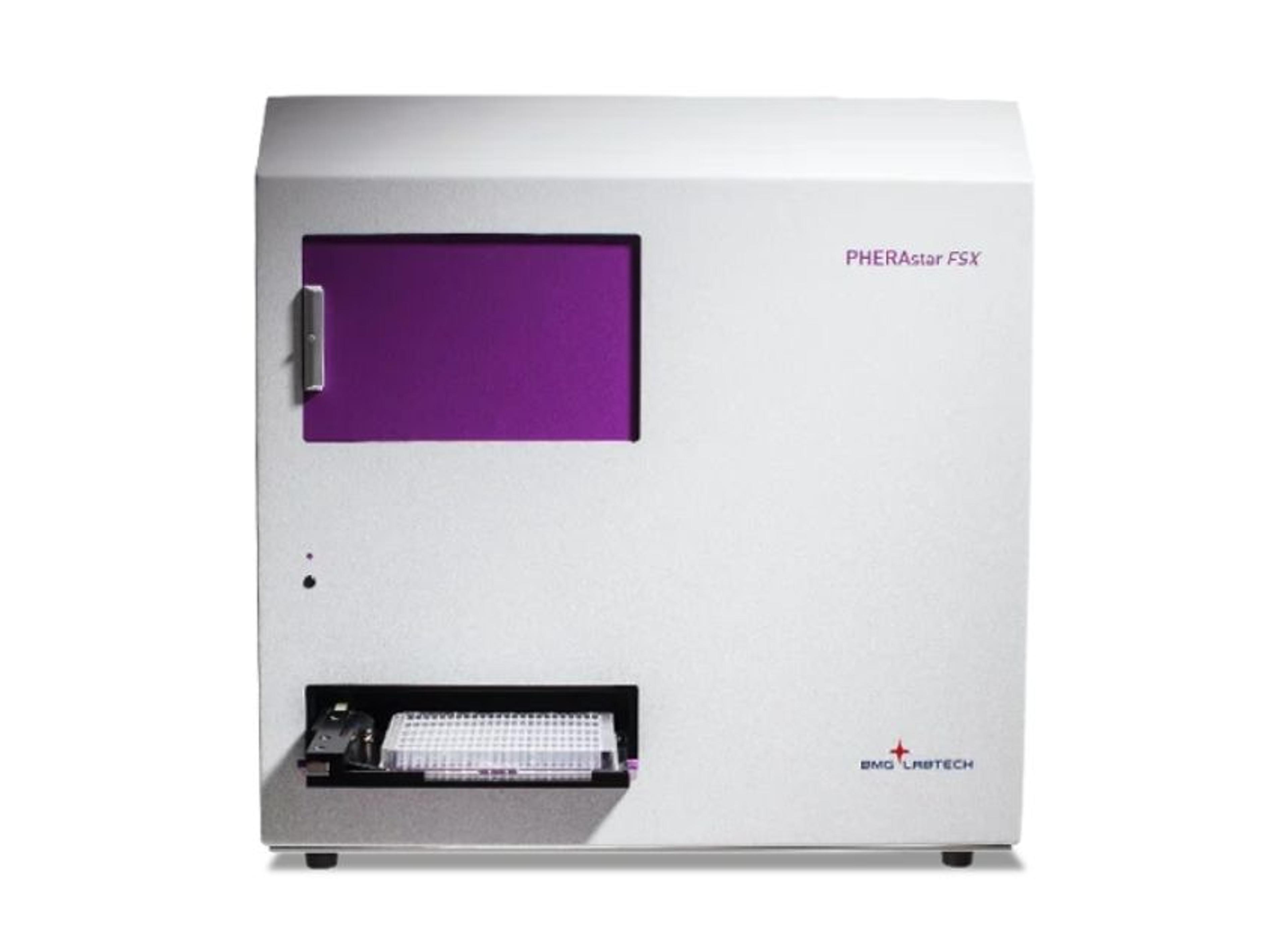A New Automated HTS Format to Quantify Receptor-Ligand Binding to GPCRs in Live Cells
17 Jan 2013Ligand binding affinities at G-protein coupled receptors (GPCRs) have historically been determined using a radioligand that competes for receptor binding sites against an unlabeled drug-like compound. But the potential hazards of open-source radioisotope handling, and the environmental impact of radioisotope disposal, make this a less desirable and costly technology. Therefore, new fluorescent based alternatives have been developed to replace radioligands.
Fluorescent ligands for GPCRs (CellAura Tehnologies, Ltd.) provide a safer method for determining ligand binding affinities. However, measurement of fluorescent ligand binding to cells relies on complex high resolution images. This approach can be lengthy and can result in 96-well plate read times of over 30 minutes. Therefore, these High Content Analysis (HCA) assays are too slow to be useful for High Throughput Screening (HTS) and automation.
HTS Microplate Reader is Sensitive Enough for Live Cell Assays
Here enters the PHERAstar FS microplate reader from BMG LABTECH for HTS and Core Lab facilities. Using advanced features on the PHERAstar FS, live cells are quickly and easily quantified for fluorescent ligand binding to the adherent cell layer in a 96-well plate format. Depending on several variables, read times can be as fast as 2 minutes for a 96-well plate. This is in stark contrast to a similar HCA assay, which takes more than 30 minutes. Example data is outlined in the application note Quantifying Fluorescent Ligand Binding to GPCRs in Live Cells using the PHERAstar FS - a new format for HTS. Derived pKi curve plots were comparable to previous radioligand binding assays and good Z’ values show that these fluorescent binding assays with this microplate reader are amendable for HTS and automation.
Safer, Faster Receptor-Ligand Binding Assays
The PHERAstar FS and CellAura fluorescent ligands provide a rapid and robust way to quantify receptor-ligand binding in live cells. Using a 96-well format and a simple assay protocol, whole-cell radioligand binding assays are replaced with this safer and more cost effective alternative. In addition, the time saving advantages over HCA assays make this format suitable for high throughput screening (HTS) and automation.
Find out more about fluorescent ligands at CellAura Technologies, Ltd. at www.cellaura.com and find out more about the PHERAstar FS HTS microplate reader please at www.bmglabtech.com.

